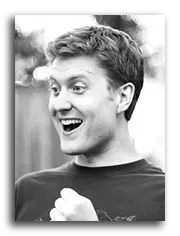 |
Christopher Templeman : President and CEO
Mr. Templeman (BA, Physics) has nine years experience developing scientific instruments for the military and government. He developed laser-based optical instrumentation for measuring contamination in industrial fluids for the Navy, and optical sediment sizing instrumentation for NOAA. He has also performed R&D services for NASA, The Army, The Air Force, and private industry. Chris started Templeman Automation with the goal of providing engineering excellence to transition concepts from prototype to product. TA is his second start-up business. While at his previous employer, Mr. Templeman spearheaded the effort to translate a lab-based fuel monitoring system into an industrial product capable of withstanding rigorous military testing, including: shock MIL-STD-901D, vibration MIL-STD-167, Electromagnetic Compliance 401D, and submersion. Mr. Templeman wrote and executed the First Article Test plan and developed novel hardware to meet the Navy’s price target. The laser-based fuel monitoring system produced, passed first article testing and has been introduced into the CVN-78 class carrier fabrication process at a cost of one-third of the price of similar particle sizing instrumentation. These efforts were recognized and published in the Navy’s SBIR/STTR Success Stories publication which “highlights a few of the many small businesses that have overcome the transition hurdles and made contributions to the military and private sector. These stories exemplify the value of the SBIR/STTR program and provide concrete examples of how small businesses have not only addressed the research and development needs of the government, but they have transitioned that technology into naval systems.” – Jay M. Cohen, Rear Admiral, US Navy, Chief of Naval Research.
Contact Chris directly at
|
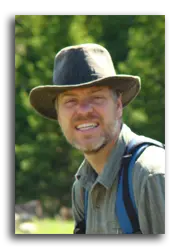 |
Dr. Michael White : CTO and CEO, Director of Technology
Dr. White (Ph. D, Physics) received his B.A. in physics from the University of Delaware and a M.S. and Ph.D. in physics from Colorado State University. Before joining TA full-time, he led the Control and Automation Group at Physical Sciences Inc. which specialized in developing SBIR technologies and taking them into the field for military and industrial applications. Control and Automation Group devices for fluid monitoring, condition based maintenance, and manpower reduction have been deployed at Navy shore stations and aboard three nuclear aircraft carriers, moving through SBIR Phase I, II, and III. Dr. White’s expertise includes system integration, shock hardened packaging, optical devices, robotics, autonomous systems, and laser technologies. His Ph.D. thesis involved an experimental measurement of temperature and velocity in the middle atmosphere using a novel five-laser sodium lidar system. His graduate training has given him a firm foundation in applied optics and laser technology especially in the context of remote sensing. Along with extensive laser experience, Dr. White has also designed and constructed scientific systems involving flow control and monitoring, detection electronics, such as photomultiplier tubes and photodiodes, atomic spectroscopy for optical filtering and frequency discrimination, electronic control and acquisition circuitry, high vacuum, and computer interfacing. Dr. White focuses on military and industrial applications of sensing, control, automation, and information technology in which a compelling need drives the use of advancing technology; specifically, in applications leading to projected product sales in the tens to many hundreds of units. At TA, Dr. White oversees technology development and leads a highly capable multidisciplinary engineering team.
|
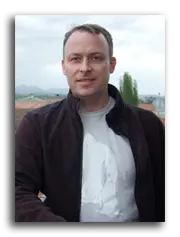 |
Leonard White : Director of Computing, Simulation, and Visualization
Mr. White is a US Citizen who graduated with a BS in Physics with Computer Sciences from Rutgers and a MS in Physics from the University of California, Irvine. He joined TA in 2007 to direct emerging physics-based simulation programs, specializing in real-time, 3D visualization applications. Leonard is the principal investigator for TA’s ONR littoral visualization SBIR (in Phase II) contract (N00014-07-M-0437), involving 3D modeling and visualization of complex sea surfaces. Before joining TA, Leonard worked for nearly a decade in Hollywood at both Sony Pictures and Rhythm & Hues Studios, leading large teams in the development of computer animation and effects for feature films. His film credits include Ghostrider, Spiderman 2 and Matrix Revolutions. Leonard has expertise in numerous 3D and 2D modeling tools and programming languages including: Houdini, Maya, Renderman, Renderman Shading Language, Mental Ray, Cinema4D, Shake, Photoshop, After Effects, Combustion, Painter, Retimer, Perl, Python, Mel, C/C++, and Objective C. Mr. White oversees all software development activities at TA.
|
 |
Cameron Dube : Aerospace Engineer
Mr. Dube graduated from the Massachusetts Institute of Technology with a degree in Aerospace Engineering with Information Technology. He is a US citizen and has been employed with Templeman Automation since 2007. He has significant experience with analysis and instrumentation in hostile environments, having worked with the MIT rocket team instrumenting liquid fueled and hybrid rocket engines. He is currently involved in ongoing development efforts at Templeman Automation involving environmentally-hardened, embedded hardware packages featuring multi-modal sensor integration, microprocessor control, and wireless communications. He is a capable machinist, and has experience in both electronic and mechanical hardware design and fabrication. Cameron’s technical and software expertise includes Ada 95, Java (including RTSJ), Python, C, MATLAB, AutoCAD, SolidWorks, Blender, Photoshop, Eclipse, and numerical control software (OMAX etc.).
|
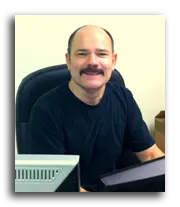 |
Dr. Joseph Weber : Sofware Engineer
Dr. Weber is a multidisciplinary researcher focusing on software engineering, especially 3D visualization applications. He holds a Master’s degree from Harvard in Information Technology with a concentration in software engineering, a Ph.D. from Duke in Neurobiology, a BA from UCSD in biochemistry, and was a sergeant in the Air Force. Dr. Weber joined TA in 2009. Previously, he published the ProteinShader program, an open source molecular visualization program using OpenGL and OpenGL Shading Language, which he continues to support for open use by biochemestry researchers worldwide. Dr. Weber has taught university computer science courses and developed software in a variety of languages including: Java, C/C++, UNIX, MATLAB, UML, Perl, Lisp, HTML, ColdFusion, and others. Dr. Weber has numerous publications in the fields of computer science, neurobiology, and biochemestry.
|
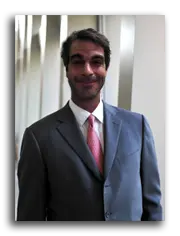 |
David Thomas : Mechanical Engineer
Mr. Thomas joined TA in 2006 to provide mechanical modeling, design, and fabrication capabilities. He has expertise in numerous 3D and 2D modeling and editing tools, including: SolidWorks, BobCAD, Houdini, Blender, Maya, Flash, Photoshop, and After Effects. David has experience with FEA modeling of stress, strain, drag, load-induced deformation, and thermal conduction, as well as ray-traced modeling for optimization of optical systems, having used such methods in many of TA's programs. He also specializes in modeling and testing complex systems of moving parts such as gears, bearings, and linkages. As a fabrication expert, Mr. Thomas is a machinist and former professional construction foreman, and is responsible for the design and construction of nearly all of TA's in-house and remote testing facilities. He is skilled in prototype fabrication using metals, woods, plastics, CNC milling, injection molding, adhesives, elastomers, and ductile materials. Mr. Thomas has significant experience in the SBIR field, having worked aboard Navy vessels, optimized designs for successful First Article Testing, built self-standing field research facilities, and conducted numerous tests and demonstrations at military installations.
|
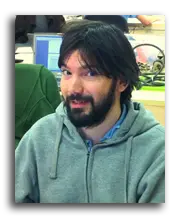 |
Randall Creasi : Software Engineer
Mr. Creasi joined TA in 2007 after working on IT and database systems in the health-care industry. At TA, Mr. Creasi specializes in C/C++ programming, especially as applied to embedded microprocessors. He has led software development efforts for TA devices based on both TERN and PIC microprocessors, featuring capabilities including self-assembling and self-healing wireless networks, broad sensor integration, real-time monitoring, and high-efficiency power management. In addition, Mr. Creasi has experience in electronic device layout and fabrication.
|
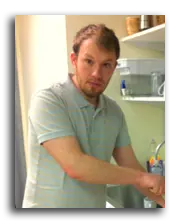 |
Dr. Sean Jeffries : Postdoctoral Fellow
Mr. Jeffries joined TA in 2010 after completing his Ph.D. in Biology at University of Cambridge as an NIH-Cambridge Health Sciences Scholar. At Cambridge he studied epigenetics and demonstrated that DNA demethylation occurs through base excision repair. Mr. Jeffires has a B.A. in Computer Science from the College of Wooster. Previously he was Head of Software Development at the Biotech firm Kalypsys where he led a development team to store and analyze large volumes of high-throughput screening data. At TA, Mr. Jeffries has developed a solar dosimeter for use in solar water disinfection (SODIS). This compact device called DoseSure is solar-powered and measures total solar exposure. Please see our SOLution brochure.
|












